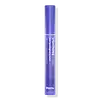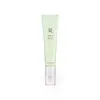What's inside
What's inside
 Key Ingredients
Key Ingredients

 Benefits
Benefits

 Concerns
Concerns

 Ingredients Side-by-side
Ingredients Side-by-side

Water
Skin ConditioningPropanediol
SolventTromethamine
BufferingGlycolic Acid
Buffering3-O-Ethyl Ascorbic Acid
Skin Conditioning1,2-Hexanediol
Skin ConditioningTranexamic Acid
AstringentNiacinamide
SmoothingSodium Citrate
BufferingGlycyrrhiza Glabra Root Extract
BleachingAcetyl Glucosamine
Skin ConditioningDipotassium Glycyrrhizate
HumectantSalix Alba Bark Extract
AstringentCurcuma Longa Root Extract
MaskingBeta-Glucan
Skin ConditioningAloe Barbadensis Leaf Extract
EmollientCorallina Officinalis Extract
Skin ConditioningGardenia Jasminoides Fruit Extract
Cosmetic ColorantMelia Azadirachta Flower Extract
Skin ConditioningMelia Azadirachta Leaf Extract
Skin ConditioningOcimum Sanctum Leaf Extract
Skin ConditioningHydrolyzed Hyaluronic Acid
HumectantGlycerin
HumectantAllantoin
Skin ConditioningPentylene Glycol
Skin ConditioningHydroxyethylcellulose
Emulsion StabilisingCellulose Gum
Emulsion StabilisingButylene Glycol
HumectantLactobacillus Ferment
Skin ConditioningSodium Benzotriazolyl Butylphenol Sulfonate
UV AbsorberButeth-3
SolventTributyl Citrate
SolventTris(Tetramethylhydroxypiperidinol)Citrate
StabilisingAlcohol
AntimicrobialTetrasodium Iminodisuccinate
Water, Propanediol, Tromethamine, Glycolic Acid, 3-O-Ethyl Ascorbic Acid, 1,2-Hexanediol, Tranexamic Acid, Niacinamide, Sodium Citrate, Glycyrrhiza Glabra Root Extract, Acetyl Glucosamine, Dipotassium Glycyrrhizate, Salix Alba Bark Extract, Curcuma Longa Root Extract, Beta-Glucan, Aloe Barbadensis Leaf Extract, Corallina Officinalis Extract, Gardenia Jasminoides Fruit Extract, Melia Azadirachta Flower Extract, Melia Azadirachta Leaf Extract, Ocimum Sanctum Leaf Extract, Hydrolyzed Hyaluronic Acid, Glycerin, Allantoin, Pentylene Glycol, Hydroxyethylcellulose, Cellulose Gum, Butylene Glycol, Lactobacillus Ferment, Sodium Benzotriazolyl Butylphenol Sulfonate, Buteth-3, Tributyl Citrate, Tris(Tetramethylhydroxypiperidinol)Citrate, Alcohol, Tetrasodium Iminodisuccinate
Centella Asiatica Extract
Cleansing3-O-Ethyl Ascorbic Acid
Skin ConditioningGlycerin
HumectantPropanediol
SolventBetaine
HumectantDicaprylyl Carbonate
EmollientMethyl Trimethicone
Skin ConditioningCetyl Ethylhexanoate
EmollientPanthenol
Skin ConditioningLaminaria Japonica Extract
Skin ProtectingEclipta Prostrata Leaf Extract
Skin ConditioningPhellodendron Amurense Bark Extract
Skin ConditioningCitrus Unshiu Peel Extract
MaskingBrassica Oleracea Acephala Leaf Extract
HumectantHydrolyzed Gardenia Florida Extract
AntioxidantHydrogenated Lecithin
EmulsifyingCetearyl Alcohol
EmollientWater
Skin ConditioningDimethicone/Vinyl Dimethicone Crosspolymer
Skin ConditioningSilica
AbrasiveBisabolol
MaskingPotassium Cetyl Phosphate
EmulsifyingHydrolyzed Jojoba Esters
Skin ConditioningCetearyl Olivate
Sorbitan Olivate
EmulsifyingHydroxyethyl Acrylate/Sodium Acryloyldimethyl Taurate Copolymer
Emulsion StabilisingAmmonium Acryloyldimethyltaurate/Beheneth-25 Methacrylate Crosspolymer
Emulsion StabilisingXanthan Gum
EmulsifyingPolyglyceryl-10 Myristate
Skin ConditioningAdenosine
Skin ConditioningFructooligosaccharides
HumectantBeta-Glucan
Skin ConditioningButylene Glycol
HumectantSorbitan Isostearate
EmulsifyingHydrolyzed Hyaluronic Acid
HumectantMaltodextrin
AbsorbentArginine
MaskingCarbomer
Emulsion StabilisingAscorbic Acid Polypeptide
Antioxidant1,2-Hexanediol
Skin ConditioningHydroxyacetophenone
AntioxidantEthylhexylglycerin
Skin ConditioningCentella Asiatica Extract, 3-O-Ethyl Ascorbic Acid, Glycerin, Propanediol, Betaine, Dicaprylyl Carbonate, Methyl Trimethicone, Cetyl Ethylhexanoate, Panthenol, Laminaria Japonica Extract, Eclipta Prostrata Leaf Extract, Phellodendron Amurense Bark Extract, Citrus Unshiu Peel Extract, Brassica Oleracea Acephala Leaf Extract, Hydrolyzed Gardenia Florida Extract, Hydrogenated Lecithin, Cetearyl Alcohol, Water, Dimethicone/Vinyl Dimethicone Crosspolymer, Silica, Bisabolol, Potassium Cetyl Phosphate, Hydrolyzed Jojoba Esters, Cetearyl Olivate, Sorbitan Olivate, Hydroxyethyl Acrylate/Sodium Acryloyldimethyl Taurate Copolymer, Ammonium Acryloyldimethyltaurate/Beheneth-25 Methacrylate Crosspolymer, Xanthan Gum, Polyglyceryl-10 Myristate, Adenosine, Fructooligosaccharides, Beta-Glucan, Butylene Glycol, Sorbitan Isostearate, Hydrolyzed Hyaluronic Acid, Maltodextrin, Arginine, Carbomer, Ascorbic Acid Polypeptide, 1,2-Hexanediol, Hydroxyacetophenone, Ethylhexylglycerin
 Reviews
Reviews

Ingredients Explained
These ingredients are found in both products.
Ingredients higher up in an ingredient list are typically present in a larger amount.
1,2-Hexanediol is a synthetic liquid and another multi-functional powerhouse.
It is a:
- Humectant, drawing moisture into the skin
- Emollient, helping to soften skin
- Solvent, dispersing and stabilizing formulas
- Preservative booster, enhancing the antimicrobial activity of other preservatives
You might know this ingredient as Ethyl Ascorbic Acid, a more stable version of ascorbic acid.
Like other types of vitamin C, this ingredient has many benefits including reducing wrinkles, skin soothing, dark spot fading, and fighting against free radicals.
3-O-Ethyl Ascorbic Acid interferes with the process of skin darkening, helping to reduce hyperpigmentation. It also encourages the skin to produce more collagen.
Once applied, 3-O-Ethyl Ascorbic Acid is converted to Vitamin C deeper in the skin's layers. This process is slow but makes this ingredient more tolerable for skin.
The optimum pH range for this ingredient is 4 - 5.5
Learn more about 3-O-Ethyl Ascorbic AcidBeta-Glucan is a polysaccharide. It can be derived from the cell walls of seaweed, oats, yeast, and fungi. It hydrates the skin and helps boost your skin's natural barrier.
As an antioxidant, beta-glucan helps fight free-radicals. Free-radicals are molecules that may damage your skin cells, such as pollution.
Studies show this ingredient may be an effective wrinkle reducer as it can deeply penetrate into skin. It has also been show to help with wound healing.
Learn more about Beta-GlucanButylene Glycol (or BG) is used within cosmetic products for a few different reasons:
Overall, Butylene Glycol is a safe and well-rounded ingredient that works well with other ingredients.
Though this ingredient works well with most skin types, some people with sensitive skin may experience a reaction such as allergic rashes, closed comedones, or itchiness.
Learn more about Butylene GlycolGlycerin is already naturally found in your skin. It helps moisturize and protect your skin.
A study from 2016 found glycerin to be more effective as a humectant than AHAs and hyaluronic acid.
As a humectant, it helps the skin stay hydrated by pulling moisture to your skin. The low molecular weight of glycerin allows it to pull moisture into the deeper layers of your skin.
Hydrated skin improves your skin barrier; Your skin barrier helps protect against irritants and bacteria.
Glycerin has also been found to have antimicrobial and antiviral properties. Due to these properties, glycerin is often used in wound and burn treatments.
In cosmetics, glycerin is usually derived from plants such as soybean or palm. However, it can also be sourced from animals, such as tallow or animal fat.
This ingredient is organic, colorless, odorless, and non-toxic.
Glycerin is the name for this ingredient in American English. British English uses Glycerol/Glycerine.
Learn more about GlycerinHydrolyzed Hyaluronic Acid is a form of hyaluronic acid. It is created by the hydrolysis of hyaluronic acid with a high molecular weight. Once created, Hydrolyzed Hyaluronic Acid has a low molecular weight.
Low molecular weight HA has been shown to hydrate and increase elasticity of the skin. Increasing elasticity is also associated with reduction of wrinkle depth.
One study found topical low molecular weight hyaluronic acid may be considered for the treatment of rosacea in the adult population. However, we always recommend speaking with a professional about your skin concerns.
Hyaluronic acids are a humectant. This means they draw moisture from the air. Hyaluronic acids help moisturize, soothe, and protect the skin.
Read more about other common forms of hyaluronic acid:
Learn more about Hydrolyzed Hyaluronic AcidPropanediol is an all-star ingredient. It softens, hydrates, and smooths the skin.
It’s often used to:
Propanediol is not likely to cause sensitivity and considered safe to use. It is derived from corn or petroleum with a clear color and no scent.
Learn more about PropanediolWater. It's the most common cosmetic ingredient of all. You'll usually see it at the top of ingredient lists, meaning that it makes up the largest part of the product.
So why is it so popular? Water most often acts as a solvent - this means that it helps dissolve other ingredients into the formulation.
You'll also recognize water as that liquid we all need to stay alive. If you see this, drink a glass of water. Stay hydrated!
Learn more about Water